Uncover Aix-en-Provence's vibrant flavors and culinary gems with our expert guides. Plan an unforgettable trip now!
Read more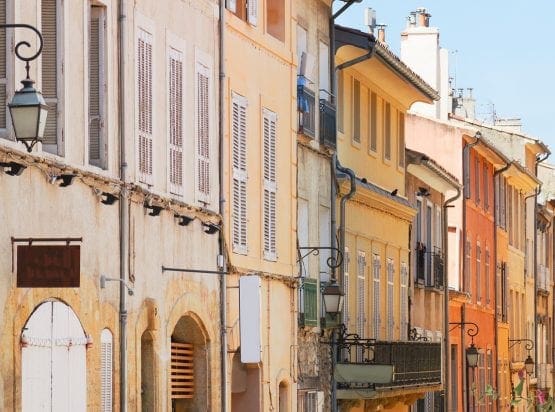
EXPLORE ALL OUR PROVENCE WINE REGIONS GUIDE
Last updated: April 4, 2025
Provence has only recently joined the ranks of Europe’s premier wine zones. For many years, people depicted the region as a “one-trick pony,” a source of a seemingly inexhaustible supply of cheap and cheerful rosé. Critics often justifiably derided the red and white wines as ‘vin ordinaire,’ the produce of overcropped vines planted on poor, lazily cultivated terroirs. But today, evidence abounds of the quality of wine that can be coaxed from Provence’s numerous appellations.
Côteaux Varois en Provence has led the forefront of this quality revolution. In select sites within the more favorable sub-zones (generally on higher ground and more deficient soils), winemakers are increasingly producing excellent wines with real local character, a signature scent, and an age-worthy structure.
Like their neighbors in the Languedoc, winegrowers strive for excellence and international renown. The tourist trade will no longer suffice.
Discover More About French Wine
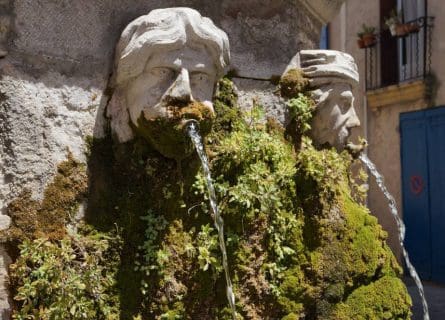
France’s eastern Mediterranean coastline has long been a European melting pot. The Ligurians occupied the area in the 1st millennium BC; however, the Greeks displaced them several centuries later. In 600 BC, Greek merchants colonized Provence and established a number of thriving settlements, including Marseille, Hyeres, St-Tropez, Antibes, and Nice.
Yet, although the Ligurians attempted to reconquer their lost prize, Julius Caesar’s armies ultimately defeated both civilizations. After Rome’s successful conquest of Gaul (France), Roman administrators created a territory known as Provincia Romana—the area between the Alps, Mediterranean, and Rhone River—which eventually became Provence.
Fall of the Western Roman Empire
The Western Roman Empire was a sight to behold: at its height, it stretched from North Africa to the Scottish border. Yet a combination of arrogance and overreach finally sealed its fate; Rome’s authority disintegrated in 476 AD as rival civilizations swept through western Europe, intent on appropriating lost Roman territories.
The Visigoths, Vandals, and Ostrogoths fought bloody battles on French soil. However, they were banished by the Frankish armies of King Clovis I.
Thereafter, a relative period of stability reigned in Provence despite an incursion from the Moorish armies of Tariq, who entered France via Roussillon in the 8th century.
Although the Arab and Berber mercenaries failed to conquer France, a subsequent invasion in 887 did establish a stronghold in Provence known as Fraxinetum. Situated close to St. Tropez, this fortress served as a staging post for incursions into the Rhone Valley and northern Italy; forces eventually ejected the Moors from France in 972.
The Papal Presence
In the 14th century, Pope Clement V and his court fled political turmoil in Rome for the city of Avignon. From 1309 to 1377, seven French-born popes took a great interest in local affairs, including the development of Provence’s wine industry.
However, in 1388, the House of Savoy incorporated Nice and its environs, while the French crown annexed the rest of the surrounding region in the late 15th century.
Nevertheless, the Papacy ruled Avignon and the Vaucluse département until 1791, when France annexed them. After the French Revolution, Napoleon III negotiated the return of territories in Provence formerly held by the House of Savoy, making France whole again.
Recovery and Prosperity
In the 19th century, however, phylloxera devastated vineyards across Western Europe. This was a dark time for the vignerons of Provence – an aphid equipped with poisonous saliva wiped out entire crops. The only solution was to regraft European vines onto American rootstock, which took place in the early 1900s.
Meanwhile, wealthy tourists and artists helped to establish Provence’s reputation as a vacation paradise. This created an unprecedented new market for Provencal pink, although the region recently broadened its appeal. Today, Côteaux Varois en Provence is a multi-color region that refuses to put all its eggs in one basket.
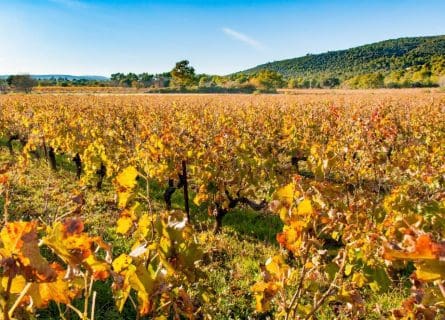
Côteaux Varois en Provence is a relatively new face in France’s great pantheon of appellations. It was introduced in 1993 as a high-tier complement to the Cotes de Provence designation, created in 1977. The vineyards are west of that zone’s demarcated boundaries, constituting a third of the Var administrative department. It is widely agreed that the terroir is first-rate – equal to the finest regions of the Languedoc and Roussillon.
Unique Terroir and Advantages for Vine Growth
There are two major advantages to growing vines here: Côteaux Varois offers water-retentive limestone soils, and the proximity of the Massif de Saint-Beaume (and Massif des Maures) provides adequate shelter.
Calcareous terroir is abundant across the appellation, providing soils with good porosity and permeability and allowing vines to thrive in inclement and drier seasons. Indeed, the world-renowned clay-limestone terrain of Côteaux Varois produces structured wines with good color and depth of flavor, making it no exception.
Climatic Influences
But more important is the moderating influence of Saint-Beaume and des Maures mountain ranges. Provence is the Mediterranean dream personified: long, dry summers and mild winters. However, compared to regions closer to the coast, Côteaux Varois is a generally cooler enclave, enjoying a continental climate with hot summers, mild springs, and cold winters.
Yet, there are further complexities; the Massif de la Ste-Baume’s maritime influence creates cooler growing conditions than one would expect during the summer. Higher altitude sites mean fresher wines, slower ripening, greater diurnal temperature variation, and more balanced, elegant vintages.
Harvesting Practices and Wine Quality
Visitors often find it surprising to learn that the harvest in some vineyards in the wooded hills north of Brignoles may not occur until late fall. This is generally unheard of in Provence; the harvest typically starts in September or late August.
It is one of the reasons why Côteaux Varois can produce such appetizing dry whites: exotically perfumed and wonderfully fresh. In the sun-baked vineyards of southern France, that is no small achievement.
There is a distinct lack of oligopoly in Côteaux Varois: the region hosts many small, family-owned wineries and some respected cooperatives. So, the output quality across the zone is remarkably high, with few poor producers and wines. As a result, it has become a fertile hunting ground for buyers – and consumers! – who wish to leap beyond rosé and explore Provence’s other strengths.
Rosé Dominance and the Expansion into Reds and Whites
Nevertheless, rosé is a mainstay of production – approximately 85% – but many fine Provencal reds and whites join it. Successive waves of invaders from all corners of Europe have ruled Côteaux Varois, which now boasts a fine palate of grape varieties, including some, like Tibouren and Calitor, unheard of elsewhere. Cabernet Sauvignon thrives in this terroir, as does Syrah, Grenache, Mourvedre, and Cinsault.
Yet growers are increasingly distancing themselves from the Carignan grape planted in Provence to supply cheap, light reds for early drinking.
The rosés are among the best in Provence – lightly colored and intriguingly scented; the classic formula is to blend three to five varieties to the exact specifications of each winemaker.
The whites, although small in number, are also worthy of excitement. Flabby, unbalanced examples are being replaced with racy wines containing any number of grapes, including Clairette, Ugni Blanc, Semillon, Vermentino, and Grenache Blanc.
Red Blends and Global Recognition
However, the powerful yet balanced red blends are now eliciting the most interest from sommeliers and wine buyers. Côteaux Varois, whose wines are currently in an exciting state of flux, is much more than (unbaptized) consumers give it credit.
There is real finesse inherent to these wines, a potent combination of Provencal fruit and charm merged with the structure and refinement one would expect from a good Bordeaux. The region has proved critics incorrect, playing a steady hand in a competitive global wine market, producing serious, terroir-driven essences of southern France with class and distinction.
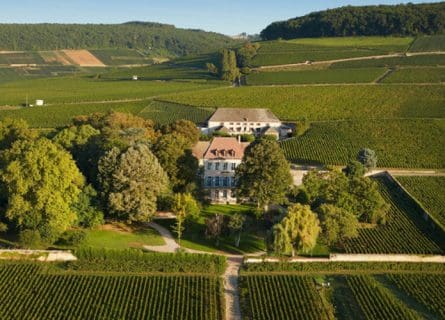
What’s the rarest thing in wine today? A magnum of 1945 Mouton Rothschild? A jeroboam of 1982 Krug? No, although most of us would go weak at the knees at the prospect of sipping a Bordeaux First Growth.
The rarest thing in wine is affordable and high-quality Pinot Noir, a grape that is notoriously difficult to grow. Sure, if you have money to burn, the Cote d’Or delivers a plethora of superlative Pinot Noir wines at astronomical prices. Yet the search for exquisite Pinot Noir that doesn’t break the bank can often be fruitless. Even Burgundy is known to market expensive labels that disappoint. What is an oenophile to do?
A New Hope: The South of France
You could try the south of France. Yes, that’s right: investors are taming the rocky terrain of the Languedoc and Provence to fashion supple, elegant Pinots grown on calcareous soils.
According to Burgundy winemaker Laurent Delaunay:
“The future of high-quality and affordable Pinot Noir is in southern France – Burgundy is just so expensive that owners seeking to bring new brands of Pinot Noir to the market must look further afield.”
He added:
“When you find a great terroir for Pinot Noir in France outside of Burgundy, you have to really champion it.”
Thus, the vineyards of Provence have attracted attention from investors across Europe over the past two decades, including Burgundy magnet Louis Latour. A stalwart of excellent Pinot Noir, the negociant decided to plant that famous grape on sites near the commune of Aups, located further north of the Côteaux Varois boundaries.
A Testament to Provence’s Potential
The location is breathtakingly beautiful: Domaine de Valmoissine is a former monastery nestled in the Verdon Hills, over 450 meters above sea level. Combining old vines, ancient soils, and world-class winemaking yields a wine of real depth and precision, renowned for its vibrant bouquet of crushed red fruits, plum, and garrigue.
Yet the wine has an innate freshness that defies expectations – to coax such finesse and elegance out of Pinot Noir grown in Provence is a testament to how far this beautiful region has come.
The Rise of Provencal Pinot Noir
Provence has already successfully crafted superlative white and red wines of structure and weight, leading growers to want to conquer new shores by refining styles and emphasizing terroir. But the boom in good and very good Pinot Noir, a grape that thrives on delicacy and not power, is astounding.
Bourboulenc is a white wine grape variety grown mainly in Southern Rhône, Provence, and Languedoc in southern France.
Find out moreGrenache blanc is a white wine grape varietal popular in the Rhône, Châteauneuf-du-Pape and Languedoc-Roussillon regions of Southern France.
Find out moreUncover the allure of Marsanne grape variety. From its traditional role in Rhône blends to the new wave of single-varietal Marsanne wines.
Find out morePascal Blanc is a rare, disease-sensitive white grape used in Cassis AOC wines, where it can make up to 40% of the blend. It thrives in Cassis' warm, dry climate and adds citrus, herb, and nutty flavors to the region's light, dry wines.
Terret Blanc is an old, high-yielding grape variety from southern France, once popular for Vermouth and dry whites. Its use has declined, but it's still permitted in certain French AOCs, contributing 10-30% to white wine blends. The grape produces light, crisp wines and is mostly confined to southern France.
Experience Trebbiano Toscano's Renaissance: Aromatic & Fresh Bianco Toscana IGT from Petrolo. The Future of Italian White Wine
Find out moreCarignan is a red grape variety that grows mostly in Southern France, and is often used as a blending grape
Find out moreCinsault is a red wine grape that is important in the Languedoc-Roussillon wine region of France because of its tolerance to high temperatures.
Find out moreDiscover grenache, a mediterranean grape that is dark-skinned red wine grape variety and an unlikely hero of a grape
Find out moreMourvèdre is a red wine grape variety of mysterious origin that's grown around the world, including the Rhone and Provence regions of France.
Find out moreSyrah is dark-skinned and perhaps the most underrated of the 'noble' red grape varieties.
Find out moreThe south of France is a paradise for foodies. It’s all yours for the taking: seasonal ingredients, fresh seafood, Carmague lamb, and a wealth of produce grown in the surrounding countryside. Every city and region boasts its specialties – Nice is renowned for socca (a thin layer of chickpea flour and olive oil batter fried on a large griddle), salade nicoise, ratatouille, and farcis (stuffed vegetables). Meanwhile, Toulon’s restaurants serve some of Provence’s best moules frites (mussels and chips) and tagliatelle aux ceps et foie gras (tagliatelle pasta with mushrooms and foie gras). Bon appetit.
Provence Gastronomy Guide: Read more

Uncover Aix-en-Provence's vibrant flavors and culinary gems with our expert guides. Plan an unforgettable trip now!
Read more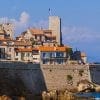
Uncover Antibes' vibrant flavors and culinary gems with our expert guides. Plan an unforgettable trip now!
Read more
Uncover Avignon's vibrant flavors and culinary gems with our expert guides. Plan an unforgettable trip now!
Read more
Uncover Marseille's vibrant flavors and culinary gems with our expert guides. Plan an unforgettable trip now!
Read more
Uncover Orange's vibrant flavors and culinary gems with our expert guides. Plan an unforgettable trip now!
Read moreIf you would like us to customize an exclusive luxury tour, contact us and let us know your travel plans. We offer luxury food and wine tours for private groups of a mininium two guests. In addition, all of our private, chauffeured tours are available year-round upon request.

